GAZA CITY—The skies of Gaza fill with shifting shapes on an early spring morning. At first they are barely visible, only specks soaring above central Gaza’s wetlands.
Mandy Sirdah quickly raises her binoculars. “Storks!” she shouts excitedly. Close by, Lara Sirdah, her identical twin sister wearing matching clothes, grabs her long-focus camera and points it to the sky. “So many! So beautiful!” she cries out with joy as she snaps photos of hundreds of white storks flying in circles above her.
Every spring, millions of birds set out from their wintering grounds in Africa and make their way north to Europe and Asia. At the intersection of three continents, the Middle East is an important stopover and one of the world’s busiest corridors for bird migration.
Many of these birds fly over Gaza, an overcrowded coastal enclave often described as an “open-air prison.” The birds soar above more than 2 million people who are confined by an air, sea and land blockade imposed by Israel since 2007.
“Our movement is very restricted,” says Lara, who feels cut off from the rest of the world. “We wish we were birds so we could move freely.” Over the past years, birdwatching trips to the Strip’s wetlands, groves and fields have offered the twins a rare opportunity to escape the feeling of confinement. With their heads raised to the sky, they search for birds and dream of flight.
On their early spring exploration of Gaza’s wetlands, the Sirdah sisters spotted more than a dozen different species of birds—white-breasted kingfishers flapped their electric-blue wings as black kites soared above yellow wagtails and egrets foraged for food. While Mandy looked through her binoculars and Lara photographed black-headed gulls, swallows swooped down on the twins, flying playfully between them.
The sisters share their photos on social media and are helping spread awareness about birds and conservation in one of the world’s most beleaguered environments. “People are surprised when they see our photos. When they think about Gaza they think it’s only blockade, poverty, destruction. But there is also beauty,” says Mandy.
Lara and Mandy, who are 47 and live in Gaza City, were never formally trained in wildlife photography or biology. Both work with Atfaluna, an organization supporting deaf people in Gaza. Since they were children they were interested in nature and wildlife, but they only started taking bird-watching seriously in 2015, when they photographed two birds they saw in their garden.

Courtesy Lara and Mandy Sirdah
“They looked like the sparrows we usually see in Gaza, but their color was brighter. We published the photo on Facebook, and a birdwatcher in the West Bank told us it was a Spanish Sparrow, one of millions of migrating birds that fly over the region,” recalls Mandy.
“We started reading more about birds and became very passionate about it. So we started photographing all the birds we saw,” she continues. Since then, the twins have spotted 165 species of migrating and resident birds in Gaza.
Despite being hampered by very limited resources and restrictions of movement, the Sirdah sisters are committed to spreading knowledge about birds. In collaboration with academic researchers and other bird-watchers they worked on the first checklist of the birds of Gaza that was published last March.
For the twins, watching birds is a source of solace in the narrow confines of the battered enclave. “The word happiness is not enough to describe what we feel, especially when we see a rare bird for the first time,” says Lara. “The birds help us deal with the pressures of our daily lives. They make us forget everything,” adds Mandy.
They talk excitedly about the day they managed to spot a European Nightjar, a nocturnal species that is notoriously hard to find because the dappled plumage blends with their habitat. “I saw the bird resting on an olive branch. It was very well-hidden but we managed to photograph it. It was one of the best days we can remember,” Mandy says smiling proudly.
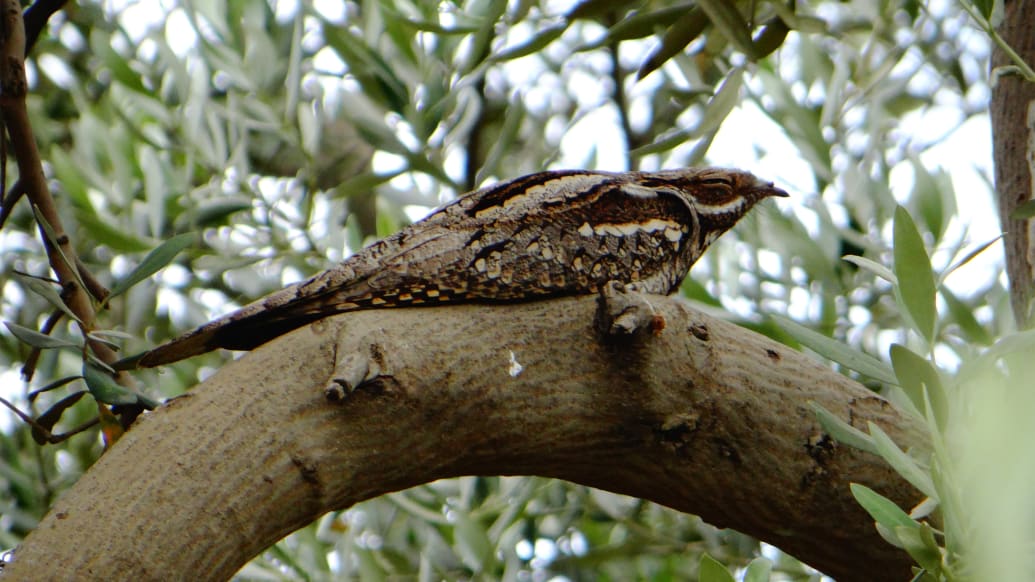
European Nightjar.
Courtesy Lara and Mandy Sirdah
Children who grew up in Gaza witnessing military offensives are more likely to know how to distinguish the sounds of missiles than birdsong. But sometimes there are unexpected connections between birds and bombings. “I used to live in an area that was under bombardment, and a couple of birds came to build their nests in holes made by shrapnel from Israeli F16 missiles,” says Salem Al Qudwa, an architect who focuses on the reconstruction of communities devastated by conflict and the possibilities of social transformation.
Across the occupied Palestinian territories, birds build nests in shrapnel holes or checkpoints, and perch on the concrete walls, barbed-wire and fences that segregate and confine Palestinians. “Birds know no borders, they can go wherever they’d like. But we have no freedom,” says Abdel Fattah Rabou, a professor of Environmental Studies at the Islamic University of Gaza.
For more than two decades, Rabou has been organizing trips to the coastal enclave’s wetlands to introduce his students to birdwatching and to teach them about Gaza’s biodiversity.
He has published several papers on the Strip’s fauna and flora, and has spent his entire career trying to raise awareness about the environment and conservation issues. Recently, he worked with Lara and Mandy on the first checklist of Gaza’s bird species.
“In the past, there was a strong culture of hunting here, if people saw a bird, they would shoot it. But in recent years you see more people who are conscious that animals should be protected,” says Rabou. While hunting is still popular and a source of income for many in the deprived enclave, he has noticed changes in attitudes.
“Now there are even people who go to pet shops and markets to buy birds just to free them from their cages,” says Rabou. “Because as a people under occupation, we shouldn’t put birds in cages.”
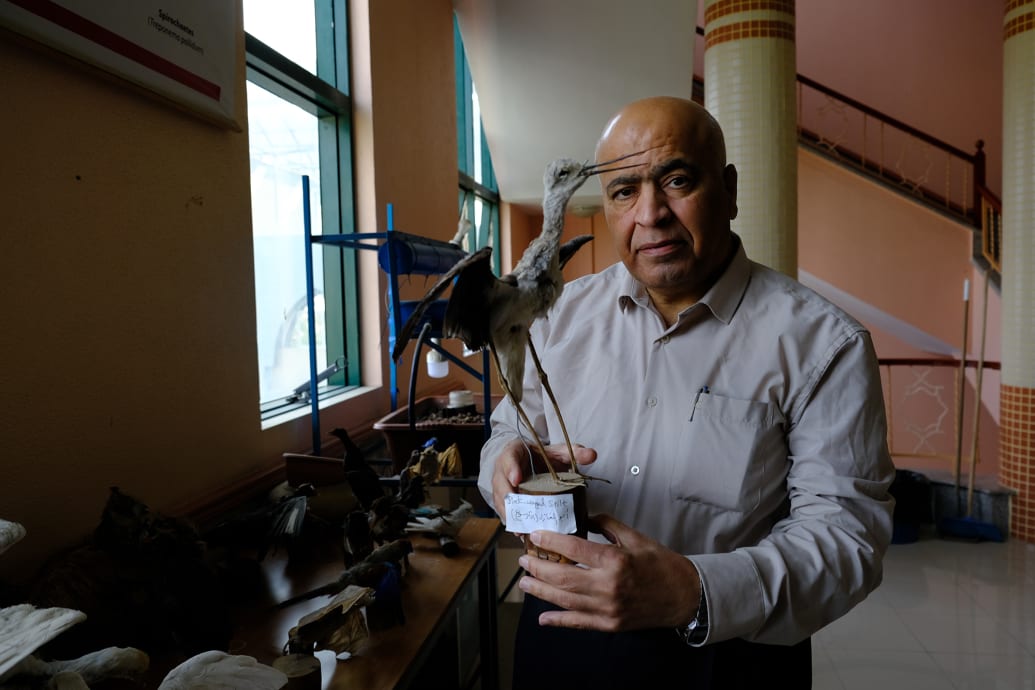
Professor Abel Rabou holds a stuffed black-winged stilt at the University of Gaza.
Marta Vidal
Being a bird-watcher in Gaza means facing endless restrictions. Israel controls Gaza’s territorial waters, airspace, and the movement of people and goods, except at the border with Egypt. Most Palestinians who grew up in Gaza since the closure imposed in 2007, when Hamas seized control from the Fatah-led Palestinian Authority, have never left the 25-by-7 mile strip.
Egyptian authorities have exacerbated the closures by restricting movement out of Gaza. Israeli authorities justify the closure on “security grounds.”
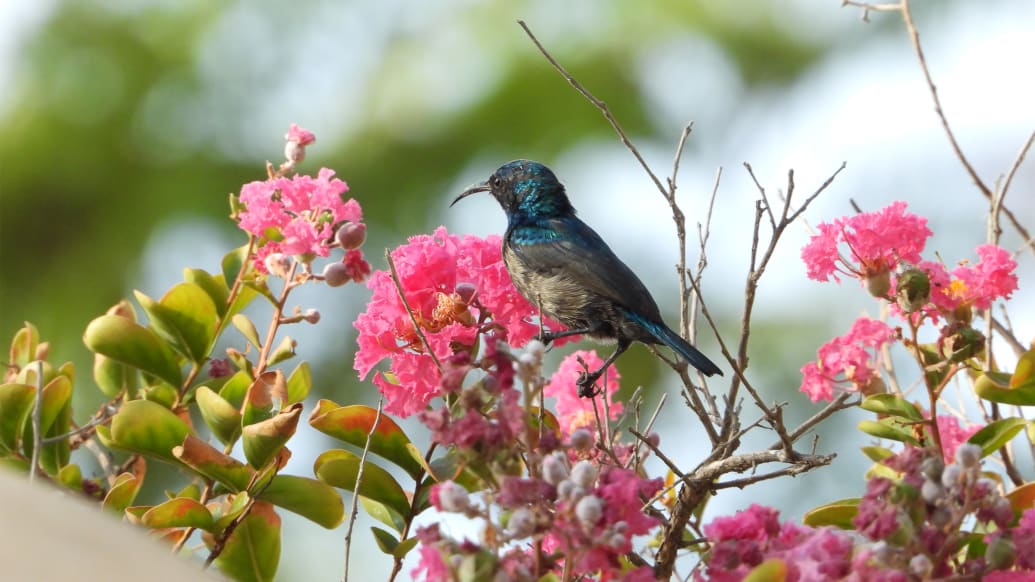
Palestine Sunbird.
Courtesy Lara and Mandy Sirdah
“We found a lot of difficulties getting the equipment,” says Lara. Binoculars and zoom lenses are usually not allowed inside Gaza since Israeli authorities considered them “dual-use” items that could be used for military purposes. The twin sisters ordered a long-focus camera for photographing birds, but it was held at the border. It took five months of waiting and a lot of patience handling permissions and questioning to be able to receive their gear.
In an enclave smothered by restrictions where unemployment is about 47 percent and more than half of the population lives in poverty, very few can afford the expensive equipment required for wildlife photography and birdwatching. The twins have to organize and self-fund all their birding trips, as there are no institutions or organizations supporting bird-watchers in Gaza.
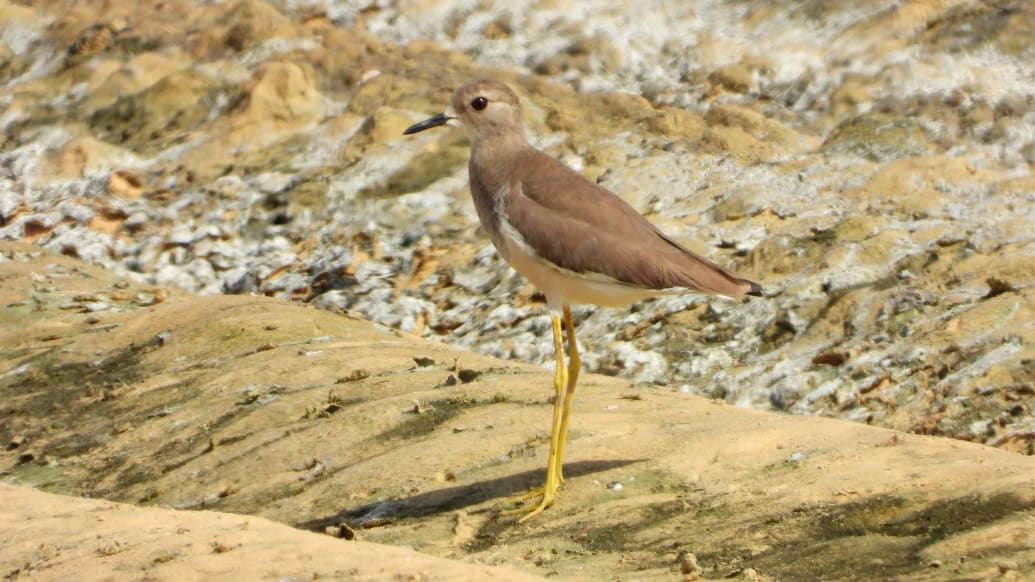
White tailed lapwing.
Courtesy Lara and Mandy Sirdah
The expeditions can also be quite risky. Several areas in Gaza are military sites closed-off to visitors, and border areas are particularly dangerous for someone carrying binoculars and cameras, which are seen with suspicion. “It’s difficult because there are sensitive areas we’re not allowed to enter,” adds Lara.
The closure imposed on Gaza also mean the twins have been unable to travel to attend conferences, exhibitions of their photos or even ceremonies for awards they received for their work. “We applied for a lot of permissions but we never managed to leave. We feel we’re very restricted,” says Lara.
Despite the restrictions, spreading the love of birds and raising more awareness about biodiversity gives the Sirdah twins a lot of satisfaction. “We are very happy when people send us photos or recordings of birds they saw or heard and ask us what bird it is. We see more people interested in birds and appreciating wildlife,” says Mandy.
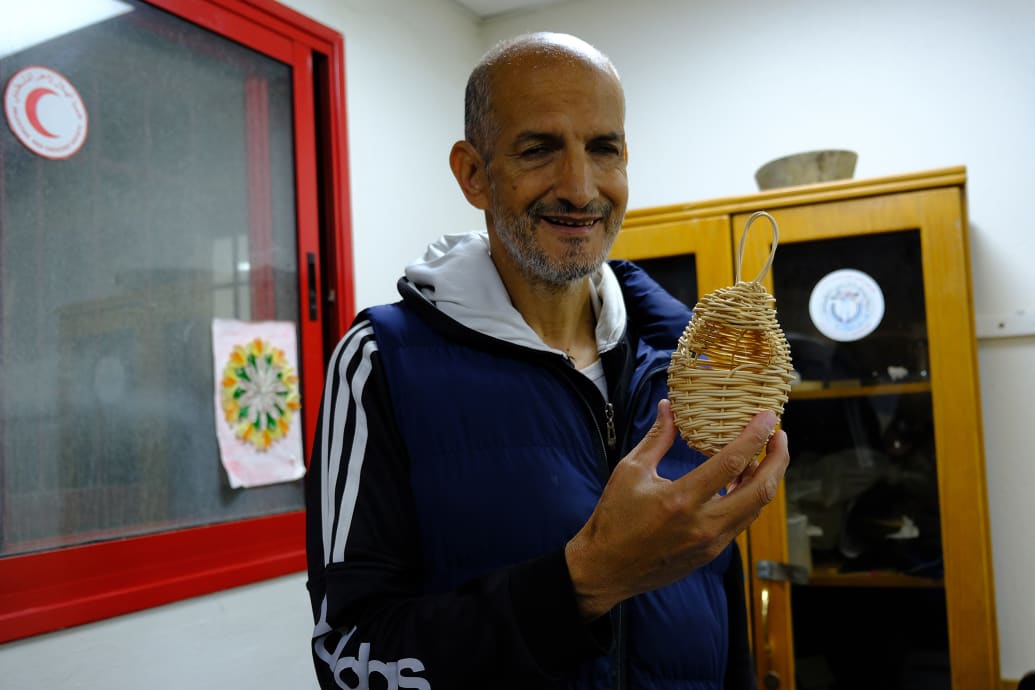
Zaki Abu Jamus hand-weaves a delicate birdhouse.
Marta Vidal
To make birding more inclusive, in recent months the twin sisters started making videos in sign language about birds. The response has been encouraging. “We keep being asked when we will post more videos, a lot of people are excited about it,” says Mandy.
The twins believe birds can improve the wellbeing of people with disabilities and be a source of comfort and hope. The deaf can appreciate the beauty of their plumage colors and patterns, and admire their flight. The blind can find joy and tranquility listening to their melodious songs and cheerful twittering.
In Khan Younis, in the south of the Gaza Strip, the Red Crescent Society hosts workshops where people with disabilities make wicker birdhouses for small birds, even when their own homes are threatened with destruction by Israeli bombings.
Zaki Abu Jamus, an experienced craftsman who is visually impaired, says the birdhouses are used locally in gardens and terraces and are also sold abroad. His fingers perform an agile dance as he quickly weaves twigs into a delicate birdhouse. When he is done, he proudly holds up the tiny wicker home. Then smiling, he asks: “Doesn’t everyone love birds?”
Ameera Harouda contributed to this article.
This project was supported by the International Women’s Media Foundation’s Howard G. Buffett Fund for Women Journalists.
This post originally appeared on and written by:
Marta Vidal
The Daily Beast 2023-04-08 03:27:00

